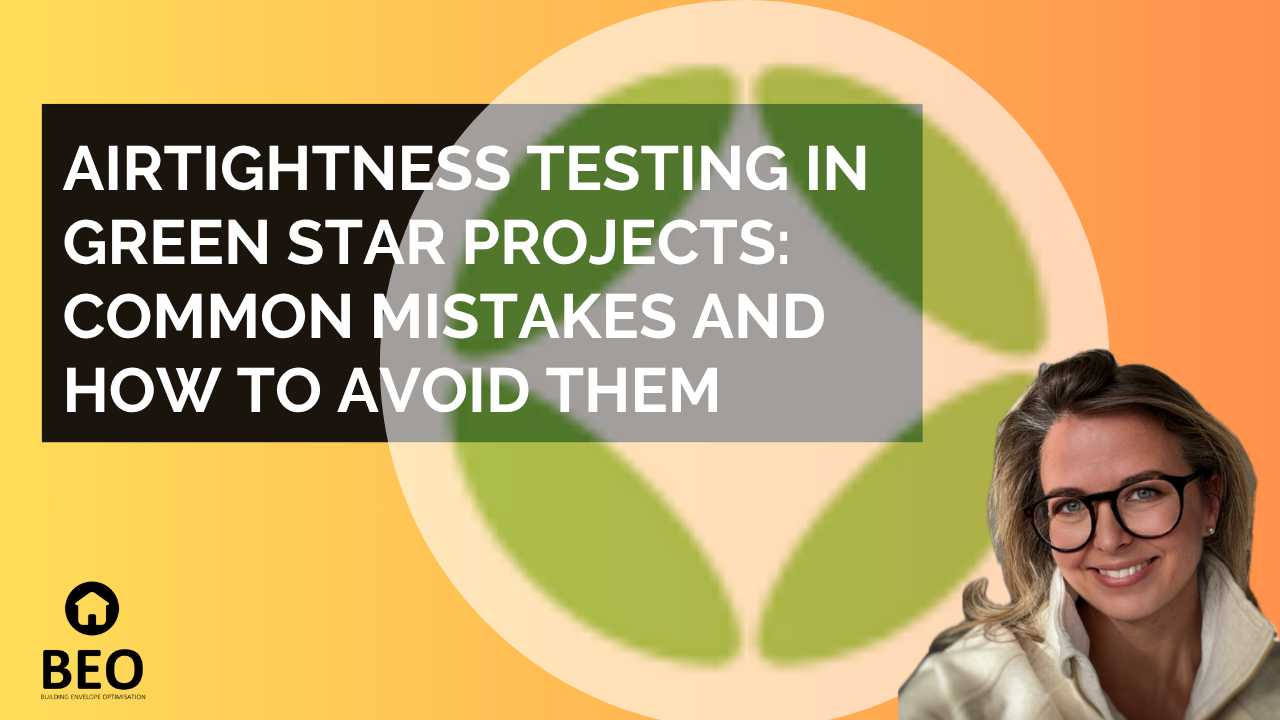Condensation Analysis That Actually Works (Not Just Tick-Box Compliance)
Passing NCC condensation compliance doesn’t guarantee your building is dry. We use WUFI modelling and AIRAH DA07 criteria to uncover hidden risks, keep mould out, and design assemblies that actually work — not just on paper.
Leaky Buildings Don’t Help As Much As You Think
Think your home’s a bit leaky, so you don’t need ventilation? Hate to break it to you—but unless your house is practically a tent, you’re not leaking nearly enough air to deal with moisture. This article breaks down how much ventilation you actually need and why most homes in NZ are nowhere near it.
Why Your Bathroom Fan Isn’t Cutting It (And What to Do About It)
Most people think a bathroom fan is enough to keep their home dry — but it’s not doing what you think. In this post, we break down how much moisture people actually add to the air, why that matters for your health and building durability, and how long your fan really needs to run to do its job.
Airtightness Testing in Green Star Projects: Common Mistakes and How to Avoid Them
Airtightness testing is one of the most misunderstood Green Star requirements — and one of the easiest to mess up. This guide outlines the top mistakes made in NZ projects and gives you a step-by-step roadmap for avoiding leaks, delays, and rework. Essential reading for architects, builders, and consultants.
What Is ATTMA L2 Testing and Why Green Star Projects Depend on It
ATTMA Level 2 testing is the gold standard for verifying airtightness in large and complex Green Star NZ projects. This guide explains what it is, when it’s required, how it works, and why it’s essential for compliance — plus how to avoid the most common testing pitfalls.
Designing for Airtightness: What Green Star NZ Requires and How to Deliver It
Designing for airtightness is now essential for achieving Green Star NZ certification. This guide explains what Green Star requires, how to detail junctions correctly, and how to coordinate your team to deliver a buildable, testable airtight envelope — without the usual finger-pointing and rework.
Why Airtightness Testing Matters in Green Star Projects
Airtightness testing is now mandatory for Green Star credits — but passing isn’t always straightforward. This guide walks you through the exact steps to hit your target, avoid testing failures, and submit airtight documentation (pun intended). Whether you’re a builder, architect, or ESD lead — this one's for you.
What’s the Most Efficient Way to Heat a House in New Zealand?
Wondering whether to upgrade your windows or invest in a new heat pump? This guide walks you through the most efficient and cost-effective ways to heat your home in New Zealand—backed by real numbers and expert insights. Learn when to prioritise building upgrades and how to avoid costly mistakes.
Why Opening a Window Isn’t a Ventilation Strategy (and What G4 Really Requires)
Still relying on windows for ventilation? That’s not enough. Learn what Clause G4 of the NZ Building Code actually requires—and how to design homes that truly breathe.
Healthy Homes 2025 Deadline: What Landlords Need to Know—and What They’re Getting Wrong
The 1 July 2025 Healthy Homes deadline is approaching fast—but many landlords are still getting it wrong. Learn how to go beyond tick-box compliance and create rentals that are truly warm, dry, and comfortable.
The Hidden Cost of Minimum Compliance: What Your Heating Calculator Isn’t Telling You
Heating calculators may help you pass Healthy Homes compliance—but they won’t guarantee comfort. Learn why oversizing, underheating, and one-room fixes fall short, and what to do instead.
Compliant but Still Cold? Why Healthy Homes Standards Don’t Guarantee Comfort
Many New Zealand homes meet the Healthy Homes Standards but still feel cold, damp, or uncomfortable. This post explains why compliance isn’t the same as performance—and how a building science assessment can help you fix the real issues.
Summer Cooling Solutions for High-Performance Homes in New Zealand
Discover how to keep your airtight or Passive House cool and comfortable during the New Zealand summer. Learn why overheating happens in high-performance homes—and what practical, science-backed strategies you can use to fix it.
Passive Solar Design: Why Principles Alone Are Not Enough for Real Results
Passive solar design sounds simple — orient your building, add glazing, and let the sun do the work. But without energy modelling, it’s mostly guesswork. Learn why true passive performance demands science, not assumptions, and how BEO Buildingscience ensures your home performs as promised.
Ventilative Cooling for Eco Homes in NZ
Ventilative cooling can make a massive difference to summer comfort in eco homes—if it’s done right. In this article, we explain how to design effective cross, stack, and night purge ventilation, and when to bring in systems like the COLD. range to manage humidity and heat when nature falls short.
H1 Compliance Made Simple: Your Guide to Building Smarter in New Zealand
Not sure what H1 compliance really means for your next project? From insulation changes to real-world challenges, this guide explains how to meet the standard—and why performance matters more than paperwork.
Dehumidification for Airtight NZ Homes | BEO Buildingscience
Moisture can quietly undo the comfort and durability of even the most well-designed home. In this article, we explore why airtight homes in New Zealand need more than ventilation to stay dry. Learn the top strategies for managing indoor humidity—including MVHR integration, post-cooling, smart controls, and daily design tips that actually work.
MVHR in Summer: Why It Fails & How to Fix It
MVHR systems work wonders in winter—but in New Zealand’s summer, they can cause overheating and discomfort. This post breaks down why MVHR may fail in warm, humid months and shows you how to design it for true year-round comfort using post-cooling and dehumidification strategies.
Sick of High Energy Bills? Fix Poor Thermal Performance & Cut Costs
Sick of skyrocketing energy bills? The real issue might not be your power provider—it could be your home’s thermal performance. Poor insulation, air leaks, and hidden thermal bridges could be draining heat and forcing your heating system to work overtime. Learn how airtightness testing, thermal bridge analysis, and energy modelling can cut your costs and make your home more efficient.
Cold Drafts Making Your Home Uncomfortable? Here’s How to Fix It
Cold drafts making your home uncomfortable? If your heating bill is climbing but your home still feels chilly, air leaks could be the culprit. Learn how airtightness testing, air sealing, and ventilation improvements can eliminate drafts and make your home warmer, healthier, and more energy-efficient.




















